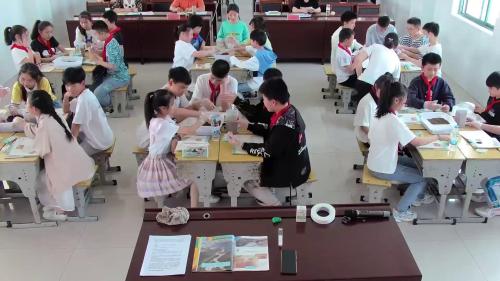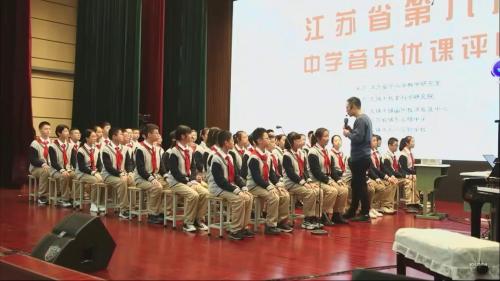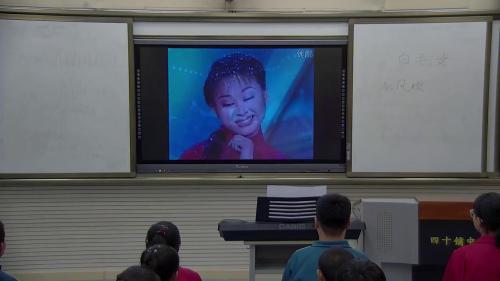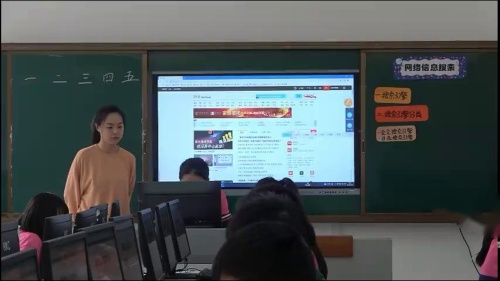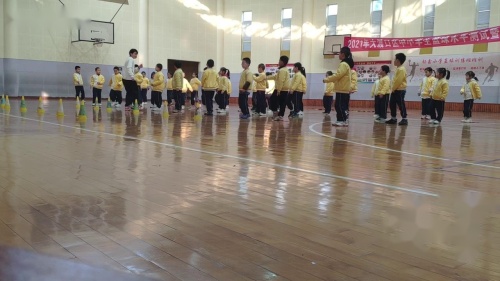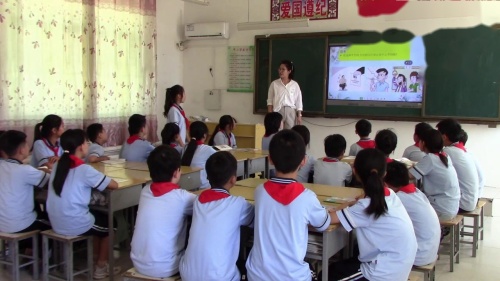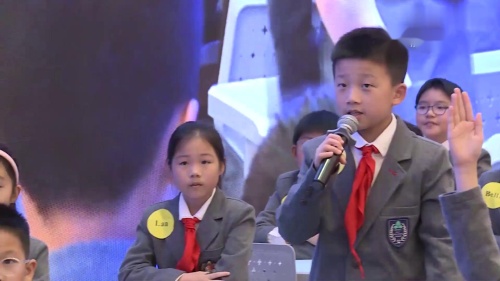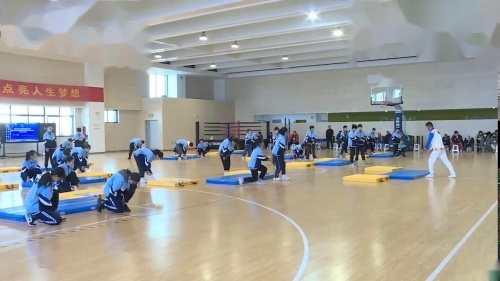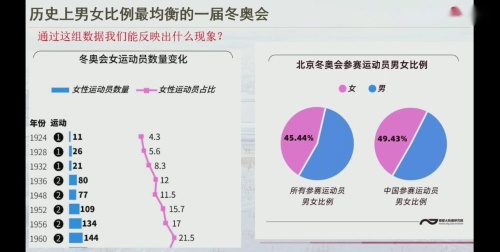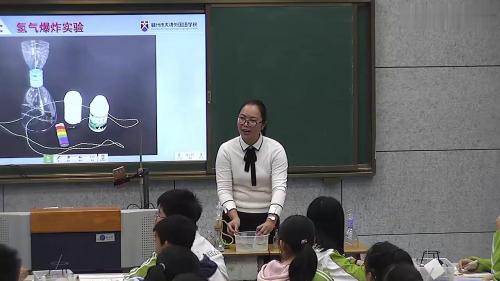教程网首页 > 学习方法 > 通用学习方法 > 学习经验 》 人教版七年级上册英语知识点
人教版七年级上册英语知识点
有知识不等于有智慧,知识积存得再多,若没有智慧加以应用,知识就失去了价值。了解你自己在做什么事,知道热爱做什么样的事,知道能把什么事做成什么样,这就是智慧;下面小编给大家分享一些人教版七年级上册英语知识,希望能够帮助大家,欢迎阅读!

人教版七年级上册英语知识1
【重点单词】
banana /b?'na:n?/ n. 香蕉
hamburger /'h?mb?:g?/ n. 汉堡包
tomato /t?'ma:t?u/ n. 西红柿
ice-cream /ais'kri:m/ n. 冰激凌
salad /'s?l?d/ n. 沙拉
strawberry /'str?:b?ri/ n. 草莓
pear /pe?/ n. 梨milk /milk/ n. 牛奶
bread /bred/ n. 面包
birthday /'b?:θdai/ n. 生日
dinner /'din?/ n. (中午或晚上吃的)正餐
week /wi:k/ n. 周;星期
think about 思考;思索
food /fu:d/ n. 食物
sure /?u?/ adv. 当然;肯定;一定
How about...? (提出建议)......怎么样?
burger /'b?:g?/ n. (=hamburger)汉堡包
vegetable /'ved?t?bl/ n. 蔬菜
fruit /fru:t/ n. 水果
right /rait/ adj. 正确的;适当的
apple /'?pl/ n. 苹果then /?en/ adv. 那么
egg /eg/ n. 蛋;鸡蛋
carrot /'k?r?t/ n. 胡萝卜
rice /rais/ n. 大米;米饭
chicken /'t?ikin/ n. 鸡肉
so /s?u/ conj. (引出评论或问题)那么
breakfast /'brekf?st/ n. 早餐;早饭
lunch /l?nt?/ n. 午餐
star /sta:/ n. 明星;星星
eat /i:t/ v. 吃
well /wel/ adv. 好;令人满意地
habit /'h?bit/ n. 习惯
healthy /'helθi/ adj. 健康的
really /'ri:?li/ adv. 真正地
question /'kwest??n/ n. 问题
want /w?nt/ v. 需要;想要
be /bi:/ v. 变成
fat /f?t/ adj. 肥的;肥胖的
一.短语归纳
1.John’s birthdaydinner 约翰的生日晚餐 2.next week 下周
3.think about 思考、考虑 4.how about 怎么样
5.some fruit 一些水果 6.his birthday 他的生日
7.sport star 体育明星 8.eating habits 饮食习惯
9.for breakfast 作为早餐 10.for dinner 作为晚餐
11.one lastquestion 最后一个问题 12.healthy food 健康的食品
二.重点句型:
1.have sth 吃……
2.—Do you like…? 你喜欢…吗?
—Yes, I do / No, I don’t. 是的,我喜欢/不,我不喜欢。
3.—Does she / he like…? 她/他喜欢…吗?
—Yes, she / hedoes.
—No, she/ hedoes’t
4.I like/ don’t like… 我喜欢/ 我不喜欢…
5.like … for breakfast / lunch / dinner 早餐/午餐/晚餐喜欢…
6.want to do sth 想要做某事
三.典句必背
1. I like hamburgers. 我喜欢汉堡包。 2. He likes ice-cream. 他喜欢冰激凌。
3. —Do you like salad? 你喜欢沙拉吗?
— Yes, I do. / No, I don’t. 是的,我喜欢./ 不,我不喜欢。
4.I don’t like bananas. 我不喜欢香蕉。
5.I don’t want to be fat.我不想变胖。
6.Cindy likes healthy food.辛迪喜欢健康的食物。
四.重点语法:
1.可数名词与不可数名词:从名词所表示的事物的性质来看,名词分为可数名词与不可数名词两类。可数名词有复数形式,不可数名词一般没有复数形式。
① 可数名词:可数名词是可以计数的,它们分为单数和复数两种形式。指单个人或事物时,用单数形式,如,a pencil 一支铅笔;指两个或多个人或事物时,用复数形式,如:two pencils 两支铅笔。
名词复数变化规则:1.一般在词尾加-s。book→books bag→bags
2.以s,x, ch, sh结尾的名词,一般在词尾加-es。class→classes
3.以“元音字母+y”结尾的名词,在词尾加-s. boy→boys
4.以“辅音字母+y”结尾的名词,先将y变为i,再加-es。family→families
5.以f或fe结尾的名词,变f或fe为v,再加-es. knife→knives
6.一些以字母o结尾的名词变复数时有的加-es有的加-s
Negro(黑人)→Negroes hero→heroes (英雄)
tomato→tomatoes (西红柿)potato→potatoes(土豆)
photo→photos (照片)
7.有一些名词变化不规则,
如:man→men tooth→teeth(牙齿) child→children
② 不可数名词:不可数名词没有复数形式,不能直接用数词来表示数量,如果要表示数量,必须借助其他词来完成。用“计量单位词+of短语”表示,其数量也应该通过of前面的名词来体现出来。
a glass of water 一杯水 two glasses of water 两杯水a cup of tea 一杯茶
two cups of tea 两杯茶 a piece of bread 一片面包 two pieces of bread两片面包
不可数名词用法歌诀:
不可数名词很特殊,六点用法要记清:
一是没有复数形式,二作主语谓须单数,
三是其前不用a或an,四是其前不用基数词,
五是可用much, some, any来修饰,
六是表数量用“计量单位+of短语
还有一类词既可作可数名词又可作不可数名词,
如:orange(橘子汁,不可数)→oranges(橘子,可数)
chicken(鸡肉,不可数)→chickens(小鸡,可数)
2.want的用法:want意为“想要、需要”①wantsth 想要某物。I want anapple.
② want to do sth想要做某事。I want to eat an apple.
③ want sb to do sth. 想要某人做某事。I want you to help me.
3.Like的用法:like及物动词,喜欢,后加名词或代词的宾格做宾语。
① like sb / sth. 喜欢某人/某物。I like this pen.
② like to do sth. 喜欢做某事。She likes to play with herfriends.
③ like doing sth.喜欢某事。He likes playing the guitar. 他喜欢弹吉他。
人教版七年级上册英语知识2
【重点单词】
do /du:/ aux v.&v. 用于否定句疑问句;做;干
have /h?v/ v. 有
tennis /'tenis/ n. 网球
ball /b?:l/ n. 球
ping-pong /'pi?p??/ n. 乒乓球
bat /b?t/ n. 球棒;球拍
soccer /'s?k?/ n. (英式)足球
soccer ball (英式)足球
volleyball /'v?lib?:l/ n. 排球
basketball /'ba:skitb?:l/ n. 篮球
hey /hei/ interj. 嘿;喂
let /let/ v. 允许;让
us /?s/ pron. (we的宾格)我们
let's = let us 让我们(一起)
go /g?u/ v. 去;走
we /wi:/ pron. 我们
late /leit/ adj. 迟到
has /h?z/ v. (have的第三人称单数形式)有
get /get/ v. 去取(或带来);得到
great /greit/ adj. 美妙的;伟大的
play /plei/ v. 参加(比赛或运动);玩耍
sound /saund/ v. 听起来好像
interesting /'intr?sti?/ adj. 有趣的
boring /'b?:ri?/ adj. 没趣的;令人厌倦的
fun /f?n/ adj. 有趣的;使人快乐的n.乐趣;快乐
difficult /'difik?lt/ adj. 困难的
relaxing /ri'l?ksi?/ adj. 轻松的;令人放松的
watch /w?t?/ v. 注视;观看
TV /ti:'vi:/ n. (=television) 电视;电视机
watch TV 看电视
same /seim/ adj. 相同的
love /l?v/ v.&n. 爱;喜爱
with /wi?/ prep. 和......在一起;带有;使用
sport /sp?:t/ n. 体育运动
them /?em/ pron. (they的宾格)他(她、它)们
only /'?unli/ adv. 只;仅
like /laik/ v. 喜欢;喜爱
easy /'i:zi/ adj. 容易的;不费力的
after /'a:ft?/ prep. 在......以后
class /kla:s/ n. 班级;课
classmate /'kla:smeit/ n. 同班同学
知识点:
1.短语归纳:
soccer ball 英式足球 a tennis bat 一个网球拍 play basketball 打篮球 baseball bat 棒球棒
play sports 参加体育运动或比赛 watch TV 看电视 in my bag 在我的包里 be late 迟到
on TV 电视上
2.一般现在时态中have的用法
have意为“有”,表示所属关系,有人称和数的变化,其主语一般是人,有时也可以是物。
1.have用于复数名词、第一、二人称单复数或第三人称复数代词作主语的句子中;has为have的第三人称单数形式,用于不可数名词、可数名词或第三人称单数代词作主语的句子中。
例:I have a pen. 我有一个钢笔。 3.have / has的一般疑问句:在句首加助
He has a pen. 他有一个钢笔。 动词do或does,句尾加问号构成。除第
2.have / has作谓语时的转换 三人称单数用does外,其余都用do.
(1)否定句式:主语+don’t / doesn’t+have… 第三人称前加does后,句中的谓语动
I don’t have an eraser. 我没有橡皮。 词has要变成have.
He doesn’t have an eraser. 他没有橡皮。 Does he have a cup? 他有一个茶杯吗?
(2)一般疑问句式:Do/ Does+主语+have… 3.Let’s=Letus 让我们……吧。
肯定答语:Yes,主语+do / does.
否定答语:No, 主语+don’t / doesn’t. 4.That sounds good.主语+系动词+表语
—Do you have a ruler?
—Yes, I do. 5.play+the+乐器,play+球类运动名词
—No, I don’t.
(3)当have / has后的名词被some修饰时,在否定句和疑问句中some要变成any.
I have some good friend.→I don’t have any good friend.
6.It+be+形容词+forsb,若该句式后加动词时要用动词不定式
It+be+形容词+forsb +to do sth做某事对某人来说是……的
Iteasy for me to play ping-pong. 打乒乓球对我来说是简单的。
人教版七年级上册英语知识3
【重点单词】
where /we?/ adv. 在哪里;到哪里
table /'teibl/ n. 桌子
bed /bed/ n. 床
bookcase /'bukkeis/ n. 书架;书柜
sofa /'s?uf?/ n. 沙发
chair /t?e?/ n. 椅子
on /?n/ prep. 在.......上
under /'?nd?/ prep. 在.......下
come /k?m/ v. 来;来到
come on 快点儿
desk /desk/ n. 书桌
think /θi?k/ n. 认为;想;思考
room /ru:m/ n. 房间
their /?e?/ pron. 他(她、它)们的
hat /h?t/ n. 帽子
head /hed/ n. 头
yeah /je?/ interj. 是的;对
know /n?u/ v. 知道;了解
radio /'reidi?u/ n. 收音机;无线电广播
clock /kl?k/ n. 时钟
tape /teip/ n. 磁带;录音带;录像带
player /plei?/ n.播放机
tape player 录音机
model /'m?dl/ n. 模型
plane /plein/ n. 飞机
model plane 飞机模型
tidy /'taidi/ adj. 整洁的;井井有条的
but /b?t/ conj. 但是
our /'au?/ pron. 我们的
everywhere /'evriwe?/ adv. 处处;到处;各地
always /'?:lweiz/ adv. 总是
知识点:
1.短语归纳:
on the sofa 在沙发上 in the schoolbag 在书包里 under the bed 在床底下 come on 快点
be tidy 整洁的 tape player 录音机 model plane 飞机模型 have a clock 有一个时钟
2.必背典句:
1. Where is my pencil box? 我的铅笔盒在哪?
2. Where are my books? 我的书在哪?
3. It’s under your bed. 它在你的床底下。
4. Come on, Jack. 快点儿,杰克。
5. I think it’s in your grandparents’ room. 我认为它在你(外)祖父母的房间里。
6. I don’t know. 我不知道
7. I’m tidy. 我是爱整洁的人。
3.介词短语
介词短语的构成:介词+the / 物主代词/名词所有格+名词等。
(1) 在介词短语中,定冠词the常常不翻译成中文,但the不能省略,是表示特指的。例:behind the door 在门后面
(2) 若介词短语中名词前用了物主代词或名词所有格时,不能再用定冠词the,但名词所有格前可以用the。例:on his desk 在他的书桌上;in the teacher’sroom 在老师的房间里
(3) 专有名词前不能用the。
(4) 表示方位的介词:on, in, behind, between,under等。
on在……上面(紧贴着某物,有面的接触)in 在……里面;behind在……后面;between在……之间,常于and连用;under在……的下面。
4.Where引导的特殊疑问句
由where引导的特殊疑问句意在询问人或者物品所在的位置,句式“where +be+名词”,注意where后的be动词用is还是用are,取决于be动词后面的名词时单数还是复数。答语句式:It is +介词短语(对应的问句为where is);They are+介词短语(对应的问句为where are)或者直接用介词短语回答,省略it is或they are。
例:1.—Where is myeraser? —It’s on the desk. / On thedesk.
2.—Where are thekeys? —They are under the bed. /Under the bed.
5.I think it’s in your grandparents’ room. 我认为它在你(外)祖父母的房间里。
变否定句:I don’t think it’s in yourgrandparents’ room..
当主语是第一人称,think表示“看法”,其后接宾语从句时,若宾语从句表示否定意义,在形式上应该否定前面的主句,这种现象叫否定转移。
(误)I think he is not a teacher.
(正) I don’t think he is a teacher. 我认为他不是一位老师。
人教版七年级上册英语知识4
【重点单词】
pencil /'pensl/ n. 铅笔
book /buk/ n. 书
eraser /i'reiz?/ n. 橡皮
box /b?ks/ n. 箱;盒
pencil box 铅笔盒;文具盒
schoolbag /'sku:lb?g/ n. 书包
dictionary /'dik??n?ri/ n. 词典;字典
his /hiz/ pron. 他的
mine /main/ pron. 我的
hers /h?:z/ pron. 她的
excuse /ik'skju:z/ v. 原谅;宽恕
me /mi:/ pron. (I的宾格)我
excuse me 劳驾;请原谅
thank /θ??k/ v. 感谢;谢谢
teacher /'ti:t??/ n. 老师;教师
about /?'baut/ prep. 关于
What about...?(询问消息或提出建议..怎么样?
yours /j?:z/ pron. 你的;你们的
for /f?:/ prep. 为了;给;对
thank you for... 为......而感谢
help /help/ v.&n. 帮助;援助
welcome /'welk?m/ adj. 受欢迎的
You're welcome. 别客气。
baseball /'beisb?:l/ n. 棒球
watch /w?t?/ n. 表;手表
computer /k?m'pju:t?/ n. 计算机;电脑
game /geim/ n. 游戏;运动;比赛
card /kɑ:d/ n. 卡片
ID card 学生卡;身份证
notebook /'n?utbuk/ n. 笔记本
ring /ri?/ n. 戒指
bag /b?g/ n. 袋;包
in /in/ prep. 在......里
library /'laibr?ri/ n. 图书馆
ask /ɑ:sk/ v. 请求;要求;询问
ask...for... 请求;恳求(给予)
find /faind/ v. (过去分词 found)找到;发现
some /s?m/ adj. 一些;某些
classroom /'klɑ:sru:m/ n. 教室
e-mail /'emeil/ n. (=email)电子邮件
at /?t/ prep. 按照;根据;在(某处、某时间时刻)
call /k?:l/ v. (给......)打电话
lost /l?st/ v. (动词lose的过去式)遗失;丢失
must /m?st/ modal v. 必须
set /set/ n. 一套;一副;一组
a set of 一套;一副;一组
知识点:
1. 短语归纳:
pencil box 铅笔盒 excuse me 打扰了 thank you 谢谢你 the blue pen 这支蓝色的钢笔
Anna’s book 安娜的书 ID card 身份证 school ID card 学生证 computer game 电子游戏
in the school library 在学校图书馆 ask…for …向…要… e-mail sb 给某人发电子邮件
call sb 给某人打电话 lose sth 丢失某物 find sth 拾到某物 a set of keys 一串钥匙
lost and found 失物招领
2. 典句必背:
1.—Is this your pencil? 这是你的铅笔吗?
—Yes, it is. 是的,它是。
2.—Is that your schoolbag? 那是你的书包吗?
—No, it isn’t. 不,它不是。
3. It’s mine / his / hers. 这是我的/他的/她的。
4. They are hers. 它们是她的。
5. Is that yours? 那是你的吗?
6. What about this dictionary? 这本字典呢?
7. Thank you for your help. 谢谢你的帮助。
8. How do you spell it?你怎么拼写它?
9. I must find it. 我必须找到它。
10. Call me at 685-6034. 请打电话685-6034找我。
3.含be动词的一般疑问句
1.将含有be动词的陈述句转换一般疑问句
将be动词(am, is, are)提到句首(首字母要大写),如果原句中的主语是第一人称要变为第二人称,句末加问号。
例:I am Zhang Yang → Are you ZhangYang?
That is mybike → Is that your bike?
2.含有be动词的一般疑问句的肯定回答与否定回答
肯定回答:Yes,主语+be
否定回答:No, 主语+be
例:—Is this your pen?
—Yes, it is / No,it isn’t.
4.Imust find it. 我必须找到它。
must是情态动词,意为“必须,应当,一定”,无时态和人称的变化,后接不带to的动词不定式,表示义务、命令、或必要。
例:You must be here ontime. 你必须按时来这儿。
must的否定形式是mustn’t= must not , 含有must的一般疑问句是把must提至句首,其肯定回答时yes,sb must;否定回答:No, sb needn’t.
例:—Must I speak English? 我必须讲英语吗?
—Yes, youmust. 是的,你必须。
—No, you needn’t. 不,你不必。
5.Aset of keys 一串钥匙
a set of 意为“一套,一组,一列”,a set of +复数名词作主语时,谓语动词用单数!!!
例:The set of keys is Tom’s. 这串钥匙是汤姆的。
人教版七年级上册英语知识5
【重点单词】
sister /'sist?/ n. 姐;妹
mother /'m???/ n. 母亲;妈妈
father /'fa:??/ n. 父亲;爸爸
parent /'pe?r?nt/ n. 父(母)亲
brother /'br???/ n. 兄;弟
grandmother /'gr?nm???/ n.(外)祖母;奶奶
grandfather /'gr?nfa:??/ n. (外)祖父;爷爷;
grandparent /'gr?npe?r?nt/ n.祖父(母);
family /'f?m?li/ n. 家;家庭
those /??uz/ pron. 那些
who /hu:/ pron. 谁;什么人
oh /?u/ interj. 哦;啊
these /?i:z/ pron. 这些
they /?ei/ pron. 他(她、它)们
well /wel/ interj. 嗯;好吧
have /h?v/ v. 经受;经历
Have a good day! (表示祝愿)过得愉快!
bye /bai/ interj. (=goodbye)再见
son /s?n/ n. 儿子
cousin /'k?zn/ n. 堂兄(弟、姐、妹);表兄
grandpa /'gr?npa:/ n. (外)祖父;爷爷;外公
mom /m?m/, /ma:m/ n. (=mum)妈妈
aunt /a:nt/ n. 姑母;姨母;伯母;婶母;舅母
grandma /'gr?nma:/ n.(外)祖母;奶奶;外婆;
dad /d?d/ n. 爸爸
uncle /'??kl/ n. 舅父;叔父;伯父;姑父;舅父
daughter /'d?:t?/ n. 女儿
here /hi?/ adv. (用以介绍人或物)这就是;在这里
photo /'f?ut?u/ n. 照片
of /?v, ?v/ prep. 属于(人或物);关于(人或物)
next /nekst/ adj.&n. 下一个(的);接下来(的)
picture /'pikt??/ n. 照片;图画
girl /g?:l/ n. 女孩
dog /d?g/ n. 狗
知识点:
1.短语归纳:
have a goodday 过得愉快 a photo of …………的照片 in the first photo 在第一张照片上 in my family 在我的家庭里 the name of ……的名字 a photo of my family 一张我的全家福 family tree 全家福(家族关系图) family photo 全家福
2.典句必背:
1. That is my family. 那是我的家庭。
2. Those are my parents. 那是我的父母。
3. These are my brothers. 这些是我的兄弟。
4. —Who’s she? 她是谁?
—She’s my sister. 她是我的姐姐(妹妹)。
5. This is my sister Kate. 这是我的妹妹凯特。
6. —Nice to meet you , Jane. 见到你很高兴。
—Nice to meet you,too. 见到你我也很高兴。
7. —Are those your parents? 那是你的父母吗?
—Yes, theyare. 是的,他们是。
8. Well, have a good day! 好吧,祝你们过得愉快!
9. Hi, I’m Jenny. 嗨,我是珍妮。
10. Hi, my name is Paul. 嗨,我叫保罗。
11. Here is a photo of my family. 这里有一张我的全家福。
3.指示代词this,that, these, those
1.指示代词是表示“这个,那个,这些,那些”的代词,其中this和these是指距离说话人较近的人或者事物;that和those是指离或华人较远的人或者事物。
2.指示代词this, that作主语时,连系动词be用单数形式is,同时后面的名词用单数形式。
当these, those作主语时,连系动词be用复数形式are,同时后面的名词用复数形式。
3.在回答主语是this或that的一般疑问句或特殊疑问句时,在答语中用it代替句中的this或者that。当回答these或those作主语的一般疑问句或特殊疑问句时,在答语中用they代替句中的these或those
4.介绍某人时,用this或that,而不用he或she.
5.打电话时,说自己是谁用This is…问别人是谁用Who’s that?
4.如何将单数句子变为复数
(1)指示代词的变化:this变为these,that变为those
(2)人称的变化:第一人称I变为we,you不发生变化,he / she / it变为they.
I am a teacher.我是一位老师→ We are teachers. 我们是老师。
(3)be动词的变化:am或is变为are。
Is she yoursister? 她是你的妹妹吗?→ Are they your sisters? 她们是你的妹妹吗?
(4可数名词的变化: 可数名词的单数形式变为复数形式
5.名词单数变复数的变化规则:
①一般情况下在词尾加s 如 pen → pens
②以x, s, ch, sh结尾的词加es。如 watch → watches
③以o结尾地词加s或者es。如 photo→photos , tomato → tomatoes
④以辅音字母加y结尾的单词,变y为i再加es 。如family → families
⑤以f或fe结尾的词,变f或fe为v再加es 。如knife → knives
6. Here are two nice photos of my family.这有两张好看的我的全家福。
此句为倒装句,正常的语序应该是“Two nice photos of my family are here”
当句子以here, there等词开头时,要用倒装句,即“Here / There+谓语动词+主语(名词)”。其中谓语动词的形式要看后面主语而定,后面主语是复数,谓语动词要用复数,后面主语是单数,谓语动词也要用单数。
例:Here is the news. 这里有一条消息。
人教版七年级上册英语知识点相关文章:
★ 新人教版七年级上册英语知识点汇总
★ 人教版英语七年级上册知识点复习
★ 人教版七年级上册英语复习归纳笔记
★ 人教版初一英语知识点
★ 七年级英语上册笔记大全
★ 初一英语学习方法指导与学习方法总结
★ 人教版七年级下册英语unit 1-4知识点汇总
★ 最新人教版八年级上册英语知识点
★ 人教版英语七年级下册知识点
★ 新人教版七年级上册英语教学计划
人教版七年级上册英语知识点相关文章:
扫一扫手机观看!

